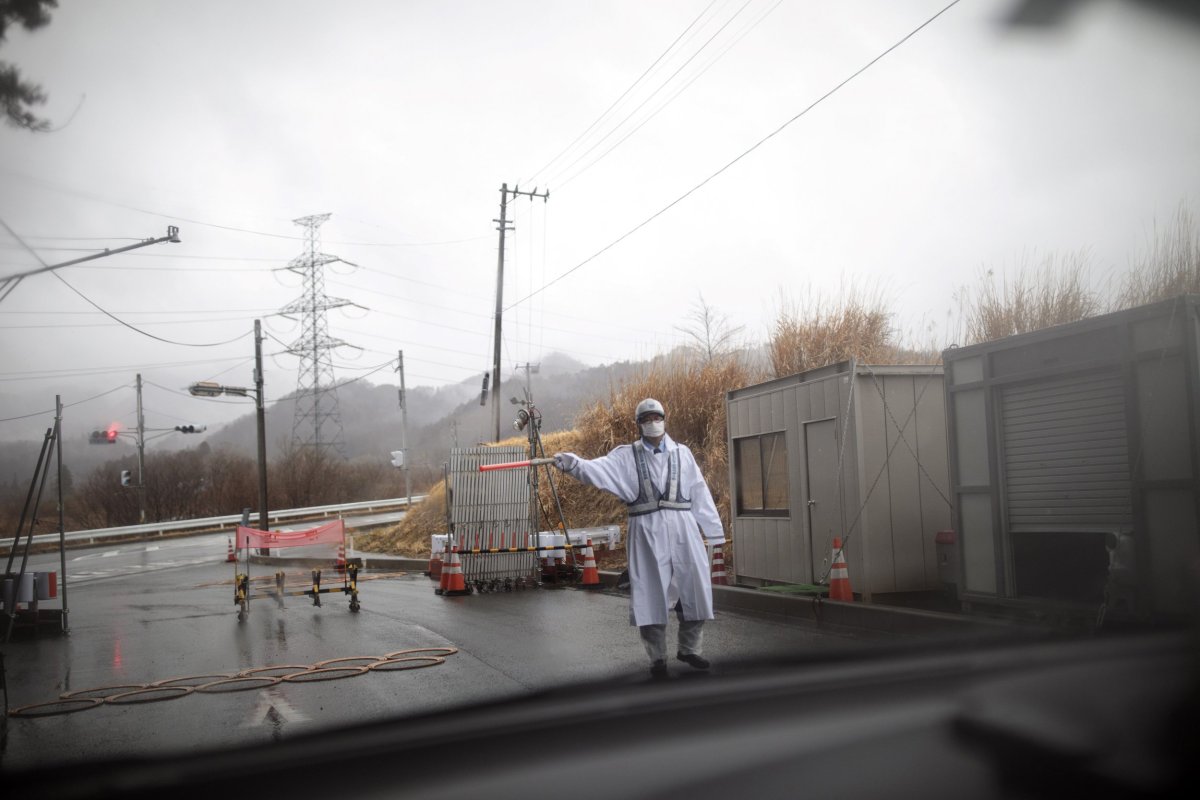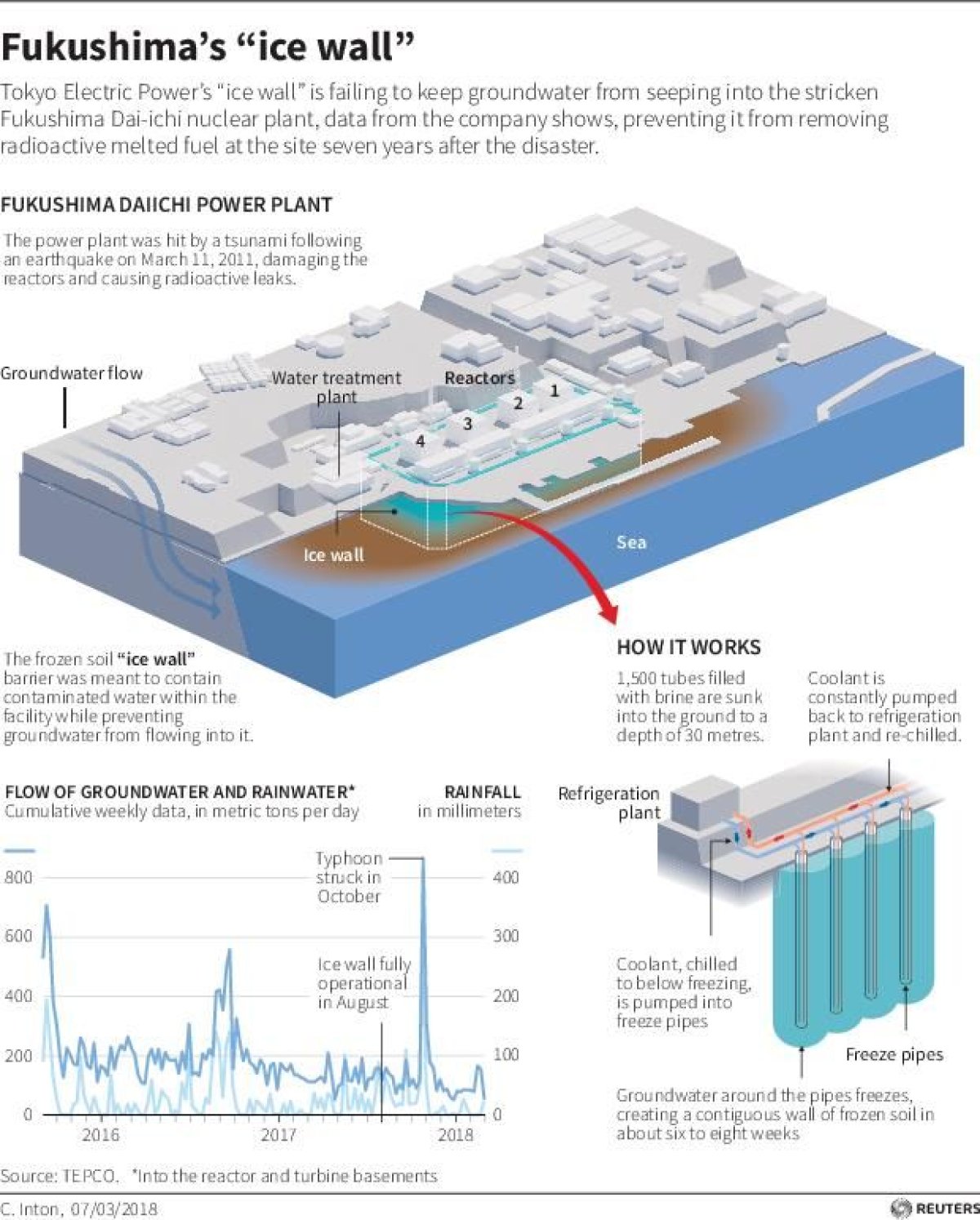A worker for the plant involved the 2011 Fukushima nuclear disaster said in a Japanese court Wednesday that his former boss was warned that a massive tsunami could strike the site, but delayed measures to build a protective wall to prevent it.
An unnamed employee of the Tokyo Electric Power Company (TEPCO) that owns the ruined Fukushima Daiichi or No.1, Nuclear Power Plant testified during a trial this week that a 2008 safety test showed an earthquake could cause a tsunami as high as 52 feet capable of pounding the coastal facility, according to The Asahi Shimbun. The company was initially set to build a seawall, but the employee told the court that former TEPCO Vice President Sakae Muto suddenly dismissed the idea.
Related: Fukushima's Nuclear Waste Will Be Dumped Into the Ocean, Japanese Plant Owner Says
The potentially catastrophic scenario was brought up again during a meeting on March 7, 2011, compelling shocked regulators to again recommend a wall to shield the facility, The Japan Times reported. But it was too late already: A magnitude 9.0 earthquake and tsunami struck only four days later on March 11, 2011, leaving up to 18,500 people dead or missing and destroying the facility.

Three out of the six nuclear reactors at the Fukushima No.1 plant suffered devastating meltdowns. Muto, along with former TEPCO Chairman Tsunehisa Katsumata and former TEPCO Vice President Ichiro Takekuro were indicted in February 2016 and are facing trial for suspected professional negligence resulting in death or injury after the worst nuclear disaster since the Chernobyl incident in 1986.
The multi-billion dollar effort to recover the site is far past schedule and over budget, but the TEPCO has claimed some recent successes. Six years after the disaster, the melted nuclear fuel was finally founded at the bottom of the partially submerged reactors. The site was so radioactive, even the robots previously sent it could not traverse the deadly core.
Efforts to retrieve the fuel, however, have been hampered as the $324 million ice wall that penetrated 100 feet into the earth failed to stop groundwater from leaking into the site, as Reuters reported last month. In fact, the amount of groundwater seeping into the facility may have increased since the highly-anticipated ice wall was installed last August, amounting to the latest setback in a cleanup process already beset by seemingly endless complications and miscalculations.
Removing this water adds to an already growing storage crisis on the site. TEPCO deliberately added water to cool off the plant's damaged reactors. After coming in contact with the plant, the coolant water and groundwater became tainted with a substance known as tritium, a byproduct of the nuclear process notoriously difficult to filter out of water. TEPCO has accumulated over 1 million tons of this tritium-laced water in 650 giant tanks, according to The Japan Times, and is urging the government to let the company begin dumping it into the ocean.

Some locals have protested this, however. While tritium was a natural byproduct of the nuclear process that experts have described as harmless in smaller doses and was dumped into oceans worldwide, Fukushima activists and fishermen have argued that dumping tritium, even in small quantities, would further hurt the reputation of the region, still synonymous with nuclear disaster. Nearby China and South Korea are among the nations that still restrict the import of certain products from Japan.
Lingering concerns about radiation have also reportedly kept many of the 160,000 residents that fled Fukushima from returning. Life, nevertheless, has begun to return to some parts of the crisis-stricken prefecture. The town of Okuma announced Wednesday that some citizens would be allowed to stay overnight starting next week for the first time since the March 2011 disaster, Japanese daily The Mainichi Shimbun said.
Uncommon Knowledge
Newsweek is committed to challenging conventional wisdom and finding connections in the search for common ground.
Newsweek is committed to challenging conventional wisdom and finding connections in the search for common ground.
About the writer
Based in his hometown of Staten Island, New York City, Tom O'Connor is an award-winning Senior Writer of Foreign Policy ... Read more
To read how Newsweek uses AI as a newsroom tool, Click here.








